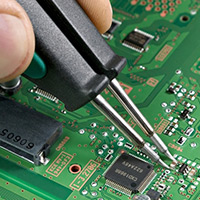

The Art and Craft of Decorative Glass Manufacturing
Decorative glass has been a cherished component of architecture and art for centuries. From stained glass windows in medieval churches to modern glass sculptures and installations, the versatility and aesthetic appeal of decorative glass have captivated artists and designers alike. With advancements in technology and design, decorative glass manufacturers are pushing the boundaries of creativity, offering a plethora of options for both commercial and residential projects.
The Evolution of Decorative Glass
Historically, decorative glass has played a critical role in enhancing visual experiences within spaces. Ancient cultures used it for functional purposes, such as windows and containers, but as techniques advanced, the decorative aspects began to flourish. The intricate designs seen in Venetian glass and Tiffany lamps serve as prime examples of how decorative glass can transform an ordinary space into something spectacular.
Today, the process of manufacturing decorative glass involves a combination of traditional craftsmanship and modern technology. Manufacturers employ various techniques, including blowing, casting, etching, and polishing, to create unique pieces that meet the diverse demands of contemporary design. This blend of old and new allows for a wide range of products, from one-of-a-kind art pieces to large-scale architectural installations.
Innovative Approaches in Manufacturing
One of the hallmarks of modern decorative glass manufacturing is innovation. Manufacturers are continually researching and developing new methods to enhance both functionality and aesthetics. For example, advanced printing techniques allow for the application of intricate designs directly onto glass surfaces, enabling customizable solutions that can fit any design vision. Furthermore, the use of tempered and laminated glass enhances the durability and safety of decorative glass products, making them suitable for various environments, including high-traffic public spaces.
Moreover, the integration of technology, such as digital fabrication and augmented reality (AR), is revolutionizing the way decorative glass is designed and produced. Designers can now create complex visualizations that help clients envision how different glass types and configurations will look in their spaces, ultimately streamlining the decision-making process.

Sustainable Practices in Decorative Glass Manufacturing
As global awareness of environmental issues grows, many decorative glass manufacturers are actively seeking sustainable practices in their operations. This includes using recycled materials, reducing energy consumption, and improving waste management processes. The shift toward sustainability is not only beneficial for the planet but also resonates with eco-conscious consumers who seek to make responsible purchasing decisions.
Manufacturers are increasingly offering eco-friendly options, such as glass made from recycled content or products that can be fully recycled at the end of their life cycle. This commitment to sustainability not only enhances a brand's reputation but also aligns with modern architectural trends that favor environmentally responsible designs.
Applications and Trends
The applications of decorative glass are vast, spanning from residential spaces—such as decorative panels, shower doors, and table tops—to commercial projects, including office partitions, storefronts, and public art installations. The growing trend of open floor plans and plenty of natural light has led to an increased demand for decorative glass elements that can add privacy without sacrificing visual openness.
In recent years, there has also been a noticeable trend toward incorporating bold colors and textures, with many manufacturers experimenting with techniques that create unique patterns and finishes. From frosted glass to etched designs, the options are endless.
Conclusion
Decorative glass manufacturing continues to evolve, marrying artistry with innovation to create products that enhance our environments. With a focus on sustainable practices, cutting-edge technology, and diverse applications, decorative glass manufacturers are not only preserving a cherished art form but also shaping the future of design. As demand for unique, personalized, and environmentally-friendly products rises, the decorative glass industry is poised for exciting advancements, ensuring its relevance in both contemporary and classic settings.